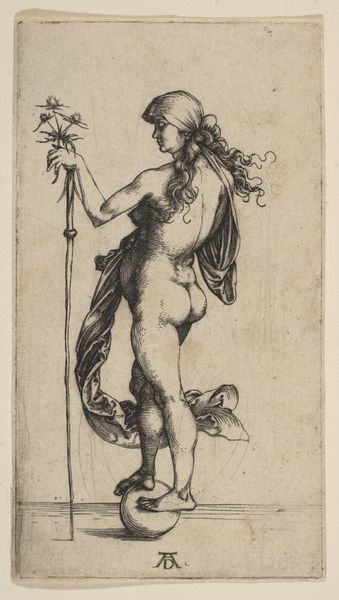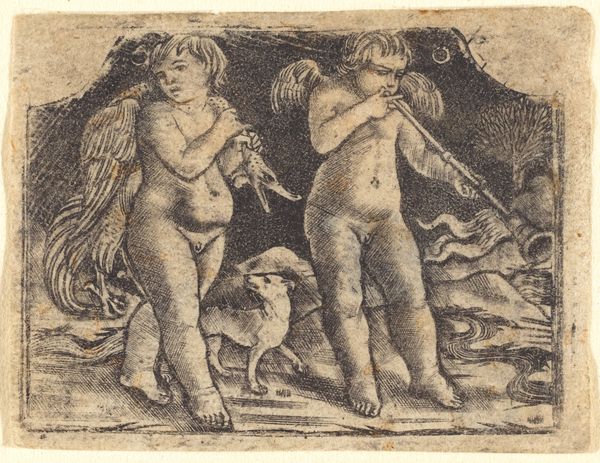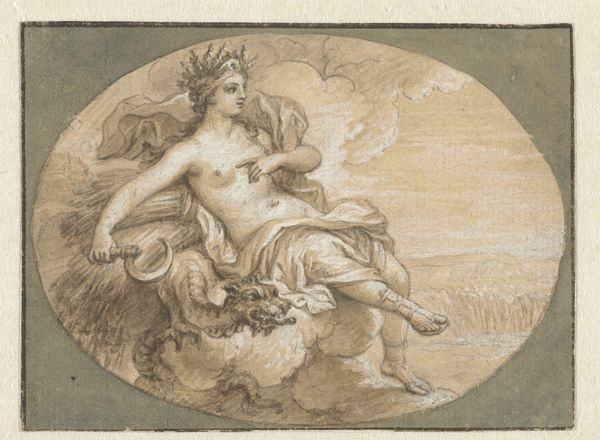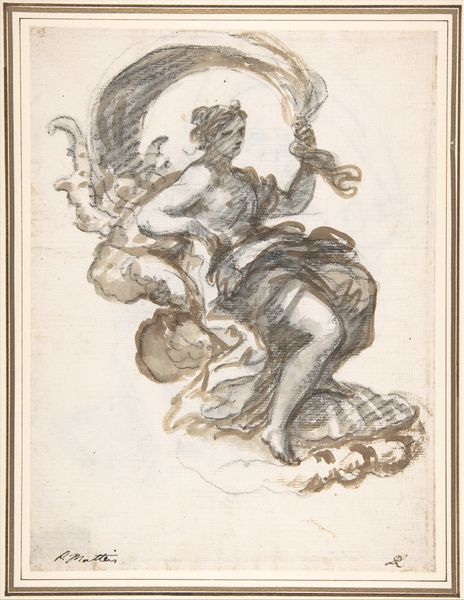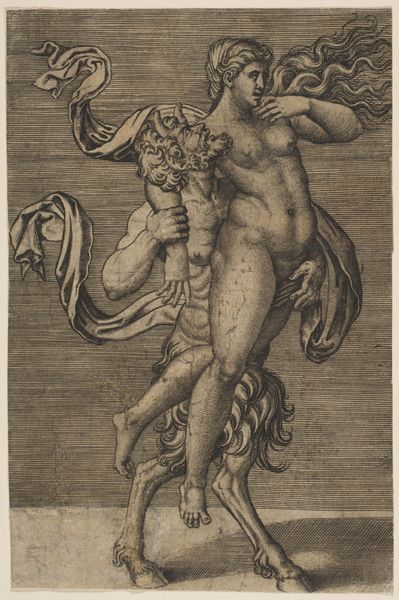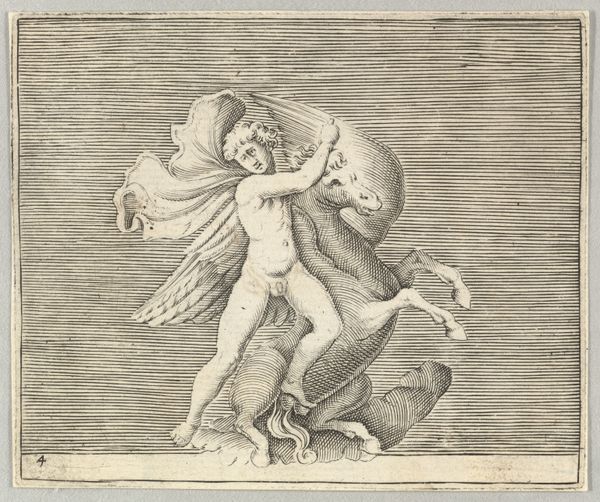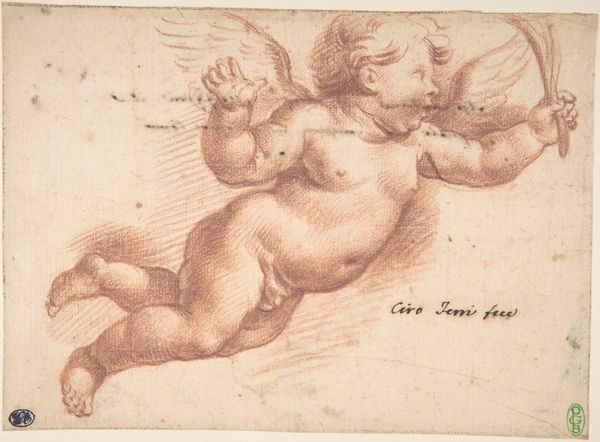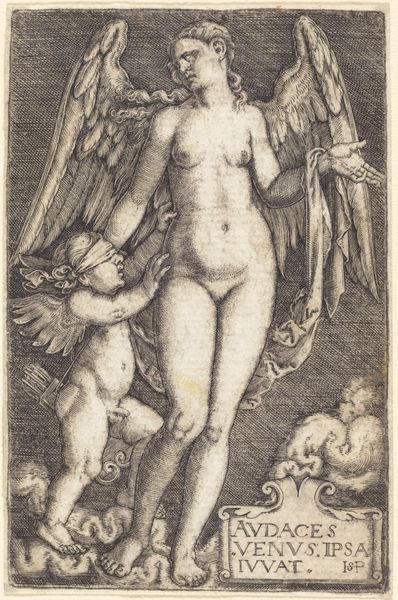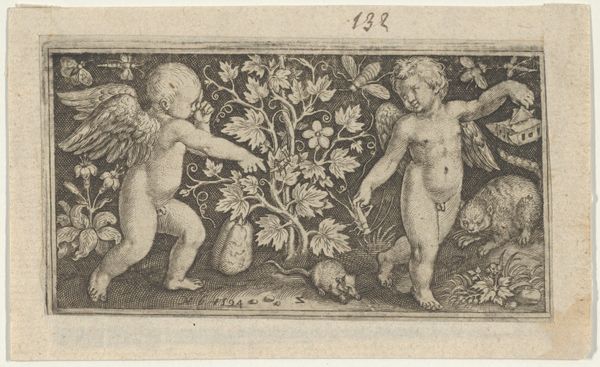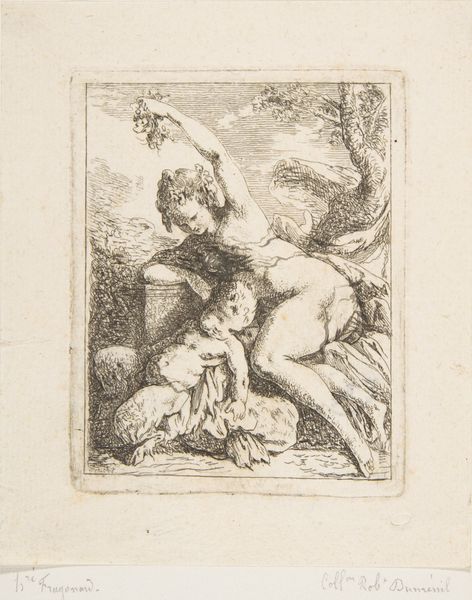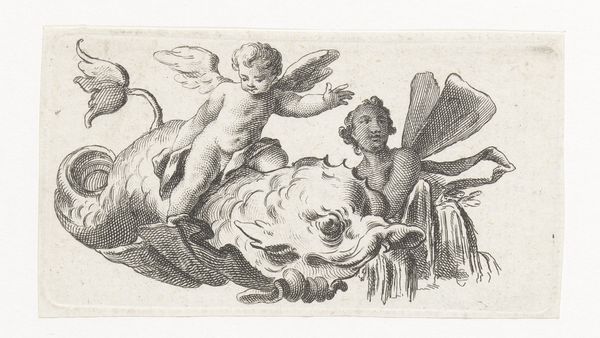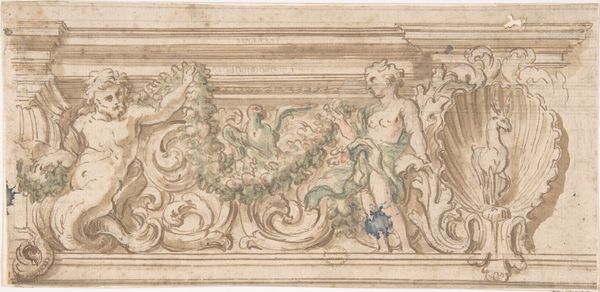
Classicizing Frieze with Three Putti holding up a Garland 1800 - 1900
drawing, print
portrait
drawing
neoclacissism
allegory
landscape
classical-realism
figuration
ancient-mediterranean
romanticism
genre-painting
history-painting
academic-art
Dimensions: 2-1/8 x 9-3/4 in
Copyright: Public Domain
Editor: This lovely drawing, "Classicizing Frieze with Three Putti holding up a Garland," dates from around 1800-1900. It’s currently held at the Metropolitan Museum of Art. What strikes me is how these putti, which usually signify joy, feel a bit burdened, weighed down by the garland and ribbons. How do you interpret this work? Curator: That's a perceptive observation. To truly understand this piece, we must acknowledge the historical and social context surrounding Neoclassicism. These putti are working, actively *holding* up something beautiful for perhaps those above. But consider: who benefits from this seemingly innocent beauty? This isn't just a decorative frieze; it reflects a whole social hierarchy and raises important questions about the role of labour, particularly child labor, even metaphorically. Editor: That’s a perspective I hadn’t considered. The labor doesn't show up clearly for me as labor, only later with guidance. What is the relationship of academic art to propaganda in this light? Curator: Exactly! Academic art of this era often served to reinforce dominant ideologies. Are these putti cherubs of love and play or conscripted symbols of productivity and beauty, their efforts contributing to the pleasure of an elite class? Editor: That's really thought-provoking. Seeing it as commentary on social roles rather than simply an aesthetic object… I never would have gotten there alone. Curator: It's about understanding that art doesn't exist in a vacuum, and the ‘innocent’ is usually benefiting someone, consciously or not. Now, how does this new understanding impact your initial reaction to the artwork? Editor: It makes me question the intent of the original artist; were they aware of the subtle commentary, or were they simply reflecting the values of the time? Curator: It could be both. The beauty and the message are entangled and that entanglement itself is interesting!
Comments
No comments
Be the first to comment and join the conversation on the ultimate creative platform.
